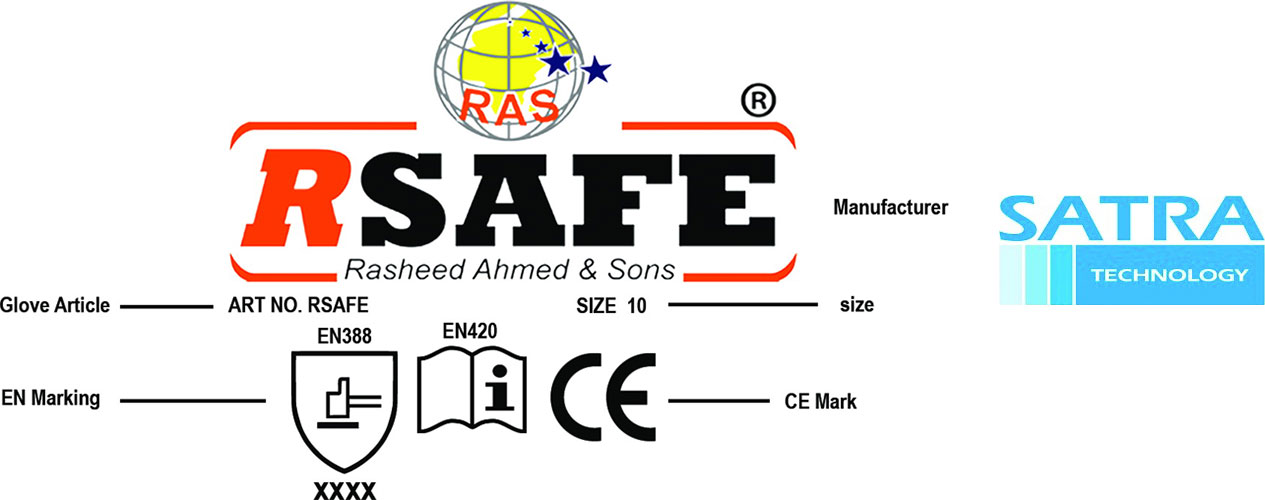This standard indicates the degree of protection on various kinds of protective gloves with regard to physical and mechanical interference caused by abrasion, blade cut, tearing and puncture.
Protection from mechanical hazards is expressed by a pictogram followed by four numbers (performed levels). Each representing a performance level using the appropriate test method as listed below:
A
Resistance to abrasion
Based on the number of cycles required to abrade through the sample glove (abrasion by glasspaper under a stipulated pressure). The protection factor is then indicated on a scale from 1 to 4 depending on how many revolutions are required to make a hole in the material.
B
Blade cut resistance
Based on the number of cycles required to cut through the sample at a constant speed. The protection factor is then indicated on a scale from 1 to 5.
C
Tear resistance
Based on the amount of force required to tear the sample. The protection factor is then indicated on a scale from 1 to 4.
D
Puncture resistance
Based on the amount of force required to pierce the sample with a standard sized point. The protection factor is then indicated on scale from 1 to 4.
EN 388:2003 Mechanical Hazards
A) Abrasion Resistance (Cycles) (Rating 0-4)
B) Blade Cut Resistance (Index) (Rating 0-5)
C) Tear Resistance (Newton) (Rating 0-4)
D) Puncture Resistance (Newton) (Rating 0-4)






